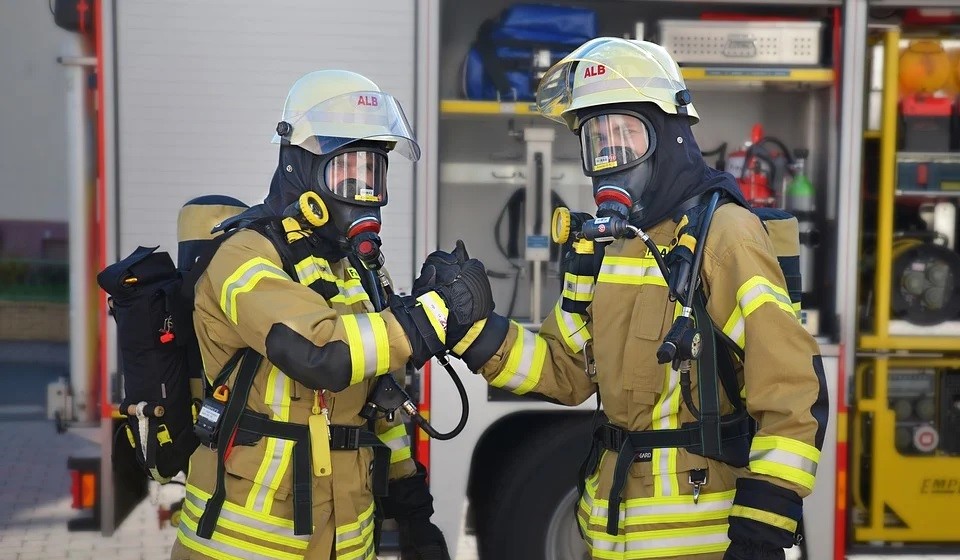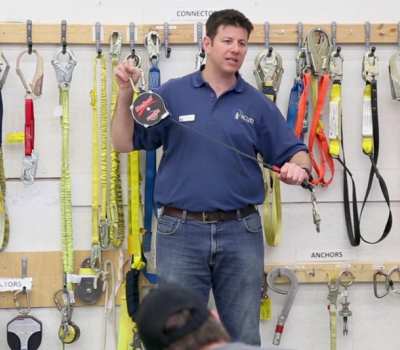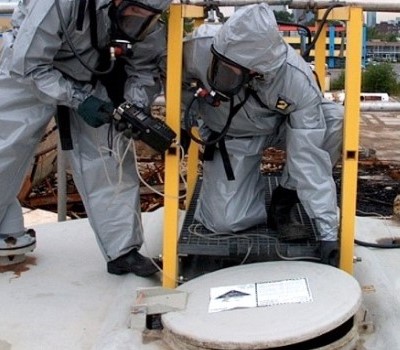Environmental health risks include any type of hazardous agent that can put your health at risk. Click on the following sections to learn more.
1. Types of Environmental Health Risks
2. Types of Jobs that Have Environmental Health Risks
3. Who Is Responsible for the Safety of Workers?
4. Training Courses that Will Protect You from Environmental Health Risks
If you are looking for professional health and safety training, contact us.

Learn more about environmental health risks
Environmental Health Risks
1. Types of Environmental Health Risks
Environmental health risks can be broken down into 3 main categories: biological hazards, chemical hazards, and physical hazards. The following is a breakdown of each type.
Biological Hazards
Biological hazards originate from living organisms such as plants, animals, and other humans. They include:
- Bodily fluids
- Blood
- Sewage
- Mold
Health Risks from Biological Hazards:
If you come into contact with biological hazards at work you could:
- Have an allergic reaction
- Catch a disease
- Be limited in your ability to do your job

Biological hazards come from living organisms -Image by Thomas Hoang from Pixabay
Chemical Hazards
Chemical hazards include chemical substances that are flammable, combustible, corrosive, or toxic. There are several ways in which a chemical hazard can become a health risk including:
- Inhaling the chemical
- Ingesting the substance
- Absorbing the chemical through your skin
Health Risks from Chemical Hazards:
Coming into contact with chemical hazards could result in the following:
- Burns
- Vomiting
- Skin or eye irritation
- Chronic conditions like asthma, cancer, or liver damage

Chemical can cause severe burns
Physical Hazards
Physical hazards are another form of environmental health risks that workers need to be aware of. They include:
- Working in extreme temperatures
- Poor air quality
- Working in an environment with excessive noise
- The presence of radiation in your workplace
Health Risks from Physical Hazards:
Physical hazards can cause you harm in several different ways including:
- Hearing loss
- Vision loss
- Cancer
- Respiratory problems

Excessive noise can be a physical health hazard – Image by donations welcome from Pixabay
2. Types of Jobs that Have Environmental Health Risks
Almost every job could pose some type of environmental health risk for its workers, however some sectors are more susceptible to these types of risks. These types of workplaces include:
- Manufacturing
- Mining
- Construction
- Environmental services
- Industrial
- Health care
- Energy sector
Workers in these industries need proper training on how to safely work around and protect themselves from these risks.

The industrial sector would have a variety of environmental health risks – Image by Frauke Feind from Pixabay
3. Who is responsible for the safety of workers?
Ultimately workplace safety is the responsibility of employers, supervisors, and workers.
Employers’ Responsibilities
Employers have the most authority in their workplaces so they also have the greatest responsibility to ensure the safety of their workers. According to Ontario’s Occupational Health & Safety Act (OHSA), employers are responsible to:
Provide your workers with proper health and safety training: You are required to give your workers the appropriate type of training that will enable them to do their jobs safely.
Provide your workers with information on hazards: You need to make sure that your workers are advised of any hazards they may be presented with in the workplace.
Provide your workers with a safe workplace and safe work: You must take all reasonable precautions to ensure that all of your workers are protected from illness and/or injury.
Provide your workers with proper safety equipment: You also need to make sure that your workers have the safety equipment they need and that they are trained to use it properly.
Have worker representation for health and safety: If you employ more than 20 workers, have a construction project with more than 20 workers that is going to take longer than 3 months, or you handle a designated substance, then you need to set up a Joint Health and Safety Committee (JHSC).
If you have less than 20 employees but more than 5, then you need to appoint a health and safety representative.
Post the Occupational Health & Safety Act: You also need to post the Occupational Health & Safety Act in your workplace along with WSIB’s poster called “In Case of Injury at Work.”

Employers and supervisors need to ensure worker safety
Supervisors’ Responsibilities
Supervisors have the next most responsibility. According to the OHSA (Occupational Health and Safety Act), supervisors have the following responsibilities with regards to the health and safety of workers:
Follow regulations: You need to make sure that workers are in compliance and following all OHSA regulations.
Use proper equipment: You must ensure that workers are using proper equipment, protective devices, and clothing that the employer requires.
Give written instructions: You need to give workers written instructions about safety procedures to follow.
Advise workers: You need to advise workers of workplace health and safety procedures that they need to follow.
Take precautions: You must take every precaution you can to protect your workers.
4. Training Courses that Will Protect You from Environmental Health Risks
There are several different types of training that can help to prepare you and your workers to deal with environmental health risks. Here are a few that ACUTE offers. For a full list of all of our health and safety training courses, click here.
Working At Heights
ACUTE’s Working at Heights training program has been approved by the Chief Prevention Officer under the Ministry of Labour, Immigration, Training and Skills Development’s Working at Heights Training Program Standard and the Working at Heights Training Provider Standard. The ACUTE Working at Heights training provides theory and hands-on practical training and evaluation facilitated by highly skilled and competent instructors.

Confined Space Entry Awareness
This training program will familiarize a participant with the requirements of Ontario Regulation 632/05 – Confined Spaces. Furthermore, the training program is intended to provide entrants, attendants and competent persons the skills and training required to recognize confined space entry risks and how to establish measured and corresponding controls. Participants will have the opportunity to become familiar with, inspect and use Confined Space Entry (CSE) access equipment and air quality instrumentation.

40 Hour HAZWOPER
This training program covers the requirements of the OSHA HAZWOPER standard (29CFR 1910.120). This standard sets out the minimum training requirements for site workers on hazardous waste sites, environmental remediation and emergency projects in the United States of America. The quality and comprehensive nature of this standard make it applicable and attractive to those employers and workers who work at Canadian workplaces that contain environmental contamination or hazardous materials.

Basic Mould Awareness
Mould growth on the interior surfaces of buildings is a risk factor for health problems. This is a general knowledge training program for anyone associated with buildings. This is a valued training program as virtually every building has or will experience water and mould damage during its service life.

Asbestos Abatement Type 1 and 2
This training program is geared towards Construction and Maintenance Workers and their Supervisors that will need to conduct Type 1 and Type 2 Operations such as Emergency Clean-up, Removal and Replacement of Asbestos Containing Ceiling Tiles, Minor Asbestos Removals, Cutting and Drilling of Asbestos-Containing Plaster and Drywall.

Asbestos Abatement Supervisor 253 S
Supervisors of Type 3 asbestos abatement work are required to be certified to perform their supervisory role. This training program prepares a supervisor to write the Ontario Ministry of Training Colleges and Universities exam for Trade Code 253S as per Section 20 of Ontario Regulation 278/05 – Designated Substance – Asbestos on Construction Projects and in Buildings and Repair Operations.

Spill Response
This training program will cover the legislative requirements and measures for spill reporting and cleanup. Participants will be taught practical strategies to both prevent and safely contain spills that occur in the workplace. Training programs are routinely customized to reflect client sites and products.

Transportation of Dangerous Goods
Transportation of dangerous goods training participants will be presented with a thorough overview of the Transportation of Dangerous Goods Regulation (TDGR). TDGR provisions will be explained in simple terms to help learners ensure that dangerous goods will be handled, offered for transport and transported safely.

Need Workplace Safety Training? Contact ACUTE
You can trust ACUTE for the best workplace safety training possible. ACUTE’s experienced team members have been serving safety professionals for over 20 years.
You can rely on ACUTE for hands-on, physically distanced, practical safety training to keep your employees safe in the workplace. ACUTE is dedicated to workplace safety and understands the importance of course and training provider approval.
Why get workplace safety training with ACUTE?
Here are just some of the benefits of working with ACUTE:

- Open Door Instructor-Student Partnership – ACUTE’s training services emphasize client participation. Staff foster relationships with clients and serve as a touchstone for advice anytime moving forward.
- Serving Your Team and Industry – With a vast array of clients in the manufacturing, construction, health, academic, and government sectors, ACUTE brings the best safety practices from across the spectrum to your workplace.
- 100 Years Combined Experience – ACUTE provides comprehensive health and safety training, on-site safety services, and consulting services. With over 100 years of combined experience, our company staff offer more than theoretical or abstract ideas. ACUTE offers solutions.
- Track Record of Success – ACUTE is rated 4.9/5 stars on Google reviews, demonstrating a commitment to our clients, quality, and passion for training.
Check out our course calendar for times and dates of our courses.
What Our Customers Are Saying…
“I work at the University of Guelph as an arborist. Ron Campbell provided a small socially distanced group and myself with working at heights training. Ron has a wealth of knowledge and kept everyone engaged with many “real life” examples of working at heights scenarios and facts. We have also received elevated work platform training with Patrick from Acute training. Patrick is also a very friendly, knowledgeable and engaging professional trainer. I truly believe that the best trainers are those with practical experience and the trainers at Acute have that locked down.”

